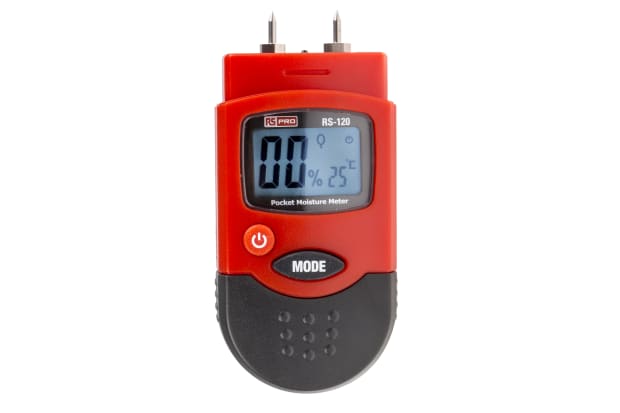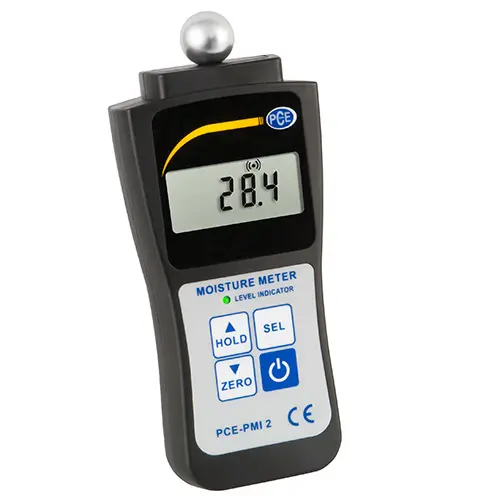How a Moisture Meter Can Improve Your Building And Construction Tasks and Prevent Damage
How a Moisture Meter Can Improve Your Building And Construction Tasks and Prevent Damage
Blog Article
Explore the Globe of Wetness Meters: Whatever You Need to Know
In the realm of dampness meters exists a world of accuracy and functionality that commonly goes unnoticed. Recognizing exactly how moisture meters operate, the various types available, and their varied uses can lose light on their importance in making certain top quality and efficiency.
Just How Wetness Meters Job
Dampness meters operate by gauging the electric conductivity or capacitance of products to determine the dampness content present - Moisture Meter. These meters are important devices across numerous industries, consisting of building, farming, and woodworking. By making use of different techniques such as pin-type or pinless innovation, moisture meters supply exact readings that aid professionals make educated choices
Pin-type dampness meters function by putting the sharp pins into the material being evaluated. On the various other hand, pinless wetness meters utilize electro-magnetic signals to check a bigger location without triggering any kind of damages to the product's surface area.
No matter the approach used, moisture meters play a vital function in preventing issues such as mold growth, architectural damages, or item issues triggered by excess dampness. Recognizing just how these meters job is crucial for making certain the top quality and honesty of products in different applications.
Types of Moisture Meters
Offered the important function moisture meters play in numerous markets, it is vital to understand the various types readily available to experts for accurately assessing dampness levels. There are largely two main kinds of moisture meters: pin-type and pinless dampness meters.
Pin-type wetness meters make use of two pins that are inserted into the product being checked to measure the electric resistance in between them. This technique is commonly utilized for timber, drywall, and other structure materials. Pin-type meters give accurate analyses at particular depths, making them ideal for determining moisture gradients.
On the various other hand, pinless moisture meters utilize electro-magnetic sensor plates to check a larger area of the material without creating any type of damages. This kind appropriates for quickly scanning huge locations and is typically used for floor covering, walls, and ceilings. Pinless meters are convenient for taking readings on completed surface areas without leaving any type of noticeable marks.
Both kinds of moisture meters have their benefits and are picked based on the particular needs of the work at hand. Understanding the distinctions in between these kinds is important for specialists to make accurate moisture evaluations.
Applications Throughout Industries
With varied functionalities, wetness meters find widespread application across different sectors, assisting professionals in guaranteeing ideal problems for frameworks and products. In the farming field, moisture meters are indispensable for figuring out the wetness web content in grains, seeds, and hay, making certain quality control and stopping mold and mildew development. Building experts count on wetness meters to examine the wetness levels in building products like timber, concrete, and drywall, which is important for preserving structural integrity and preventing concerns like rot or mold. The floor covering industry makes use of dampness meters to determine the moisture content in subfloors prior to mounting different floor coverings, preventing expensive damages due to excess dampness. In the food sector, dampness meters are utilized to monitor and regulate moisture levels in items such as grains, nuts, and dried out fruits to maintain quality and high quality. Additionally, dampness meters play an essential function in the restoration and damage control industry by assisting professionals address and recognize water damages in structures immediately. Across these varied my site industries, wetness meters are important tools for making sure the quality, safety and security, and longevity of numerous materials and items.
Tips for Making Use Of Dampness Meters
Make use of the dampness meter's calibration setups to guarantee precise readings when measuring the dampness content in various products. In addition, make sure the meter is set to the correct dampness variety for the product find out here you are determining to obtain the most exact results.

When utilizing a pin-type dampness meter, place the pins to the proper deepness suggested for the material being checked. This ensures that the dampness analyses are drawn from the right depth within the material, offering a more exact depiction of its wetness material. For pinless moisture meters, remember to maintain correct call with the material's surface to obtain trusted analyses.

Regularly inspect and replace the batteries in your dampness meter to stop unreliable readings as a result of low power. Shop the meter in a risk-free and dry area when not in use to lengthen its lifespan and keep its accuracy. By adhering to these suggestions, you can maximize the performance of your moisture meter and acquire exact wetness content measurements throughout different products.

Maintenance and Calibration
To make sure the precision of wetness content dimensions, regular upkeep and calibration of the dampness meter are necessary action in its appropriate functioning. Upkeep involves maintaining the moisture meter cost-free and clean from particles that can impact its analyses. It is very important to adhere to the producer's standards for cleaning to avoid damage to the gadget. Additionally, routine calibration is essential to verify the precision of the readings. Calibration changes the moisture meter to make sure that it gives constant and trusted results.
Calibration ought to be check carried out regularly, especially if the moisture meter is used frequently or in critical applications where precise dimensions are called for. By calibrating the moisture and keeping meter consistently, customers can rely on the accuracy of the moisture content dimensions gotten.
Final Thought
Finally, moisture meters play an important role in numerous markets by precisely measuring the wetness material of products. Recognizing exactly how these devices function, the various types readily available, and appropriate maintenance and calibration are crucial for acquiring reputable results. Whether in agriculture, building and construction, or production, the use of moisture meters aids guarantee quality assurance and efficiency in procedures.
Construction experts rely on wetness meters to analyze the moisture degrees in building materials like wood, concrete, and drywall, which is essential for keeping structural stability and preventing issues like rot or mold and mildew. The floor covering industry uses dampness meters to measure the dampness content in subfloors before setting up numerous floor coverings, stopping pricey damages due to excess moisture.Use the wetness meter's calibration setups to ensure accurate readings when determining the moisture material in numerous products. By adhering to these tips, you can make the most of the performance of your wetness meter and acquire specific dampness web content dimensions across different materials.
In conclusion, wetness meters play an important role in various industries by precisely measuring the wetness material of materials.
Report this page